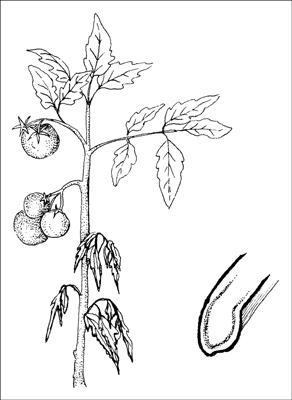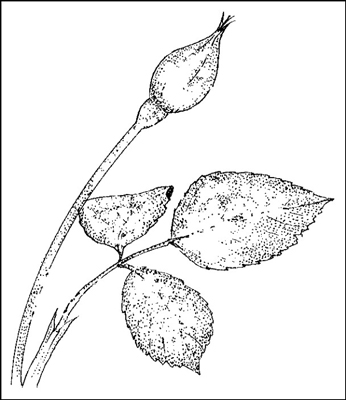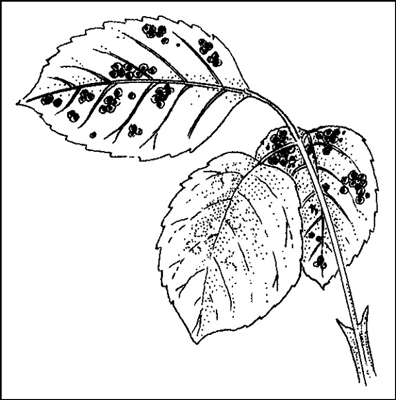Many names of plant diseases describe the symptoms they cause, such as powdery mildew, leaf curl, and club root diseases. Some diseases attack only one plant part, whereas others can affect the entire plant.
The following list describes some of the most common garden diseases:
Anthracnose: This fungi attacks beans, vine crops, tomatoes, and peppers. Look for small, discolored leaf spots or dead twigs. Prune off affected plant parts. Fungicides containing copper can help.
Club root: This fungus infects mainly cole crops. Symptoms include stunted growth, wilting, poor development, and swollen lumps on the roots. Raise the soil pH to 7.2, and avoid planting susceptible crops in infected soil for at least seven years.
Corn smut: This fungus disease causes large, mutant-looking, white to gray swellings on corn ears. Prevent the disease by planting resistant corn varieties and rotating crops.
Damping off: This fungus rots the stems of young plants near the soil line. Prevent by planting only in pasteurized planting soil and avoiding overwatering.
Fusarium wilt: The symptoms are yellowing leaves and stunted growth, followed by wilting and plant death. In melons, the stems develop a yellow streak, which eventually turns brown. After plants are infected, no cure is possible. Build your soil's health so that it contains lots of beneficial microorganisms, you should rarely be bothered with this disease.
 Fusarium wilt is fatal to many vegetable crops.
Fusarium wilt is fatal to many vegetable crops.Leaf spots and blights: Several fungi show up first as circular spots on plant leaves. The spots increase in size until the leaves die and fall off. The fungi spread if overhead watering wets the foliage. Try botanical and biological fungicides first, using copper-based fungicides only as a last resort.
Mildew (downy and powdery): These two fungi produce similar symptoms: a white, powdery coating on leaves. The fungi disfigure plants but may not kill them. Use potassium bicarbonate, superfine horticultural oil, or neem oil to treat infected plants.
 Powdery mildew infects vegetables, and many flowering plants.
Powdery mildew infects vegetables, and many flowering plants.Root rot: Several fungal root diseases cause susceptible plants to turn yellow, wilt, and die. Plants are susceptible when the soil is too moist or poorly aerated. The fungi can survive in the soil for many years. Prevent root rot by building healthy, well-drained soil.
Rust fungus: Rust fungus is most prevalent in humid and damp conditions. Provide good air circulation, remove and destroy infected foliage, and keep your tools clean.
 Rust fungus forms yellow or orange bumps on leaf undersides.
Rust fungus forms yellow or orange bumps on leaf undersides.Verticillium wilt: This fungus affects tomatoes, eggplant, potatoes, raspberries, strawberries, roses, Japanese maples, olives, and cherries. Look for wilting and yellow leaves. The leaves may curl up before falling off. Choose resistant varieties, and practice crop rotation.
Viruses: This group of incurable diseases infects vegetables, brambles, strawberries, trees, and flowering plants. The leaves develop mottled yellow, white, or light green patches and may pucker along the veins. Flowers may develop off-color patches, and fruit ripens unevenly. Aphids, leafhoppers, nematodes, and whiteflies spread the virus as they move from plant to plant. Prevention is the only strategy.

